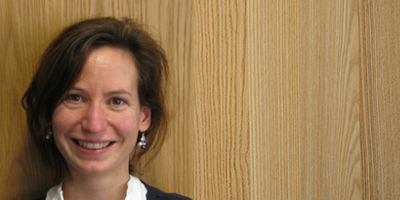Breathe easy – engineering air quality solutions
21 October 2016, 9:00–13:00
Birmingham City University
Working with the IET and CIBSE, we hosted an event focused on air quality. Pollution and poor air quality, particularly in urban areas, is an increasing concern for local authorities, health and public services, and the public alike.
- Breathe easy programme (pdf, 3.5 MB)
Chaired by Paddy Conaghan, CIBSE Vice-President, this event highlights the problems and practical built environment, engineering and policy solutions required to address UK air quality challenges. The emphasis is on practical advice, recent case studies, and signposting to information resources and solutions, and will bring together people from across sectors to encourage inter-disciplinary exchange.
Every breath we take: the lifelong impact of air pollution
Prof Patrick Saunders, Faculty of Public Health
Every breath we take, published in February 2016, is the first rigorous analysis of the life-course effects of air pollution from pre-conception and the baby’s first weeks in the womb through to old age. Air pollutants damage fundamental biological systems with emerging evidence of adverse effects on growth, intelligence, brain development, and coordination. These impacts will last far into the future with serious implications for individuals, populations and wider society. The report details a range of recommendations and interventions underpinned by evidence, effectiveness and equity. These reflect the need to act decisively, imaginatively and most importantly, now.
- Royal College of Physicians. Every breath we take: the lifelong impact of air pollution. Report of a working party. London: RCP, 2016
- IET.TV video Patrick Saunders
BUCCANEER: Birmingham Urban Climate Change Adaptation with Neighbourhood Estimates of Environmental Risk
Prof John Thornes, University of Birmingham
The talk will discuss the need for an Urban Heat Island model such as BUCCANEER to check that planning applications are climate ready. Urban areas can also lead to high levels of air pollution and there is an urgent need to get commuters out of their cars to walk, cycle and use public transport more. We have to guard against unintended consequences such as high levels of air pollution linked to buses, taxis and trains.
- IET.TV video John E Thornes
Healthy indoor environments: evidence, solutions and gaps
Dr Marcella Ucci, UCL
Dr Ucci will discuss the importance of indoor air quality for healthy indoor environments, within the context of indoor environmental quality, and the need for integrated design. Examples will be given regarding the control of moisture-related allergens and the importance of source control. She will also introduce the work of the UK Indoor Environments Groups and a new Masters degree in health, Wellbeing and Sustainable Buildings.
- IET.TV video Marcella Ucci
Interdependencies between housing, energy and wellbeing
Clive Shrubsole, UCL Institute for Environmental Design and Engineering
Clive will discuss the importance of integrated policy thinking for the indoor environment, and how disparate policies in different domains can impact indoor air quality and health. Using the example of infrastructure interdependencies between housing and energy provision in London and Milton Keynes he shows that ‘win-win’ situations can occur and that good IAQ in homes can be realised whilst achieving reductions in end use energy demand in pursuit of climate change goals. However, the price for getting it wrong is a trade-off between occupant health and emissions reduction, with occupant health being the loser.
- Energy efficiency retrofit is more effective & has health benefits if combined with grid decarbonisation & enhanced ventilation, So what, now what? guide for ARCC
- IET.TV video Clive Shrubsole
Building regulations and standards related to air quality
Dr Julie Godefroy, Sustainability consultant
This talk will give an introduction to regulations and standards on air quality. It will provide an overview of World Health Organization guidelines, EU directives, and UK objectives, followed by more focus on building design applications including Building Regulations, best practice guidance (e.g. CIBSE), and voluntary certification schemes such as BREEAM and WELL.
- CIBSE Build2Perform podcast, Oct 2016 – The air we breathe
- IET.TV video Julie Godefroy
Homes
Engineering solutions for air quality in homes
Dr Andy Dengel, BRE Indoor Air Quality team
The presentation will cover the work BRE has undertaken regarding a range of products and systems designed to improve indoor air quality. This will include development of the type of test protocols required to demonstrate efficacy of innovative solutions of these types.
- IET.TV video Andy Dengel
Safe as houses? Ventilation and health in dwellings
Dr Benjamin Jones, University of Nottingham
In the UK, we spend over 70% of our time inside our own homes where we are exposed to a range of airborne pollutants. 60-95% of our total lifetime exposure is in our houses, and 30% of it occurs during sleep. There is a growing awareness of their effects on health and so dwelling air quality is a cause for concern. However, high concentrations of pollutants in a house do not necessarily indicate a health hazard. Therefore, key pollutants must be identified and methods of controlling and reducing exposure using different strategies must be applied. But what are these pollutants, and what are these strategies? This talks asks, are our houses really are as “safe as houses”?
- Hamilton I., Milner J., Chalabi Z., Das P., Jones B., Shrubsole C., et al. 2015 Health effects of home energy efficiency interventions in England: a modelling study. BMJ Open. 5 DOI: 10.1136/bmjopen-2014-007298
- Logue J.M., Price P.N., Sherman M.H., Singer B.C. 2011 A method to estimate the chronic health impact of air pollutants in U.S. residences. Environmental Health Perspectives. 120: 216–22 DOI: 10.1289/ehp.1104035
- IET.TV video Benjamin Jones
Hospitals
Indoor air quality in hospitals
Dr Tim Lee, Lecturer, Birmingham City University
Tim Lee presented on behalf of Dr Ghasson Shabha.
- IET.TV video Tim Lee
The spread of infectious disease and antimicrobial filters
Dr Lena Circic, UCL
An exploration of how infectious diseases can spread in the built environment and how engineering solutions can be used to reduce numbers of pathogens.
- IET.TV video Lena Ciric
Transport
Emissions from road transport: monitoring mitigation actions
Dr Teresa Raventos, University of Leicester
The influence of mobility to air pollution or vice versa is a key area of research which can inform the local authorities and decision makers. This talk will explain a study case focused at the North West Leicester, where a policy scheme for improvement of traffic flow and air quality led by Leicester City Council and Leicestershire County Council was implemented. The objective was to monitor the air pollution by deploying a number of low cost small sensors and record long period NOx, CO and O3 concentrations to assess the impact of transport policy interventions on the air pollution and at the key points of traffic emissions.
- Leicester City Council: Air quality
- IET.TV video Teresa Raventos
Air pollution: home or away?
Professor John Thornes, University of Birmingham
The air pollution episodes of March and April 2014 will be examined using Ambulance Data for London to show how different health effects can result – depending on where the air pollution comes from. Is much of it imported (away) or locally generated (home)?
Elliot et al. (2016) Monitoring the effect of air pollution episodes on health care consultations and ambulance call-outs in England during March/April 2014: A retrospective observational analysis. Environmental Pollution, 214: 903–911, DOI: 10.1016/j.envpol.2016.04.026
Green Infrastructure
Green Infrastructure as a built environment air quality service
Prof John Dover, Staffordshire University
The intelligent use of vegetation can improve air quality outdoors and indoors. The talk will discuss some of the challenges facing society and building owners/users and identify how vegetation can be used to contribute to overcoming them.
- Green Infrastructure – incorporating plants and enhancing biodiversity in buildings and urban environments. J.W. Dover, 2016
- IET.TV video John Dover












